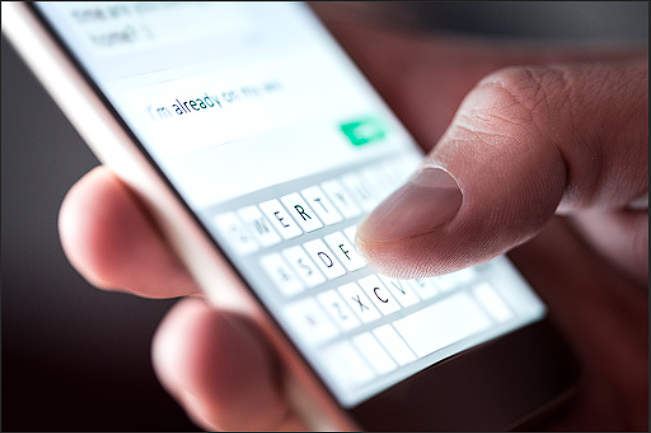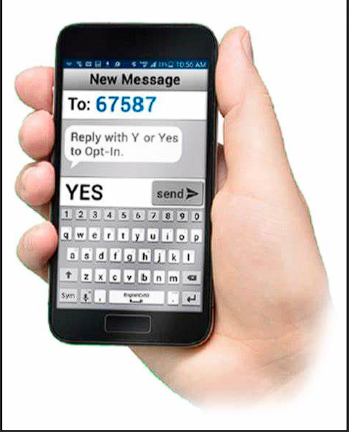What is A2P 10DLC?
A2P 10DLC refers to a system in the United States that allows businesses to send Application-to-Person (A2P) type messaging via standard 10-digit long code (10DLC) phone numbers. Carriers in the US consider all Twilio traffic to be A2P. Carriers’ A2P 10DLC offerings provide better delivery quality and lower filtering risk than long code SMS of the past, using the same phone numbers.
For many years, cell phone users could expect to receive a torrent of spam texts in their inboxes, ranging from advertisements to outright scams. After much public outcry, the American government decided that enough was enough. It declared that cell phone carriers like Verizon and AT&T are liable for any unwarranted and unwanted messages on their network. To protect themselves from litigation, they introduced a plethora of requirements.
The carriers then created the 10DLC and The Campaign Registry (TCR) to enforce requirements on those using local phone numbers. 10DLC stands for “ten-digit long code,” which describes local numbers, the most commonly used phone number for sending SMS. The Campaign Registry, operated by the cell carriers, verifies and monitors companies that use A2P 10DLC to message customers to ensure they comply with their rules.
For companies and customers alike, the creation of 10DLC and TCR is a good thing. It formally recognized A2P (application-to-peer) platforms and their place in marketing while differentiating them from the junk text pushers. Moreover, less spam reaches everyone’s inboxes. The downside? 10DLC has the side effect of making things more complicated for those who wish to send text messages. Sending SMS messages to customers takes a little more effort, planning, and resources.

How Does A2P 10DLC Compliance Work?
Registration with The Campaign Registry is straightforward through our A2P SMS platform. We offer an extensive form that goes directly to TCR. If it’s filled out correctly, it should be verified and sent down the SMS pipeline to its destined recipients.
The process begins with a phone number. If it’s a ten-digit number with a local area code in the United States, it must be verified by TCR. Local numbers go through the TCR’s 10DLC certification process within a few days. These steps are essential for maintaining a positive, healthy relationship with SMS.
Now, the sender is ready to start preparing their SMS plans. TCR wants to know who is getting the texts and why. This involves telling TCR via form about the “campaign” to ensure A2P 10DLC compliance. This includes attaching multiple pictures of what the texts will look like and what keywords they’ll be using. All activities involving sending SMS are considered a campaign, even if it’s used for internal communications, confirming appointments, or customer service.
The next – and trickiest – step is providing evidence of opt-ins. The SMS recipient must consent to get texts from the sender. Moreover, the sender must prove that the recipient agrees to receive text messages and can opt out anytime. Evidence includes photos of where opt-ins are obtained and proof of opt-outs. Verification comes with a small fee, partly to reduce the cost-effectiveness of spam and fraud by SMS.
Opt-Ins and Opt-Outs
For brands, getting authentic opt-ins is one of the more challenging parts of SMS strategy. There are a few types of opt-ins, each with its pros and cons.
Simple SMS opt-in: This opt-in is straightforward and is a good first step to achieving A2P 10DLC compliance. The recipient simply agrees once before they start receiving texts. For example, the recipient ticks a checkbox at an online store and hears about sales and new products the following day.
Double SMS opt-in: This method builds upon its simpler counterpart. For example, after agreeing once to receive texts, the first SMS a customer gets says, “Reply AGREE to learn more about the latest deals on junk.” While this may initially seem like an extra step, it helps refine one’s SMS campaigns. This is because some people accidentally agree or use a fake number when signing up initially. Since every text costs money, the double opt-in ensures that only the most interested parties get a message, ensuring that no text is wasted on an uninterested person.
Soft SMS opt-in: In this technically legal method, this opt-in doesn’t explicitly require consent. Instead, the “opt-in” is derived from the recipient’s purchasing habits. For example, if they bought something from a store, surely they would want to get texts from said store? So long as there’s a clear opt-out keyword, it’s legal to do so. Note that this is far from best practice and can result in a loss of brand trust. While technically meeting A2P 10DLC compliance, there may be better ways to do so.
When planning an opt-in gathering for any SMS campaign, it is essential to pick a strategy that suits you. All of these methods are ideal for someone. Just make sure to keep evidence that opt-ins are obtained legally.

What happens if I don't register?
Increased message filtering and fees will apply to messages that are sent without registration. Unregistered numbers will be subject to gradually increased rates of message blocking, beginning on July 5, 2023, ultimately leading to a full block of all unregistered US-bound messages sent after August 31, 2023.
How does US A2P Brand registration work?
To begin registration, customers must register a Brand consisting of their Business Profile information and indicating whether they are an ISV or Direct customer.
How do Trust Scores influence message throughput?
When registering a Standard Brand you will receive a Trust Score from 0 to 100. This rating influences the maximum message throughput that will be allocated to each of your Campaign use cases (see below). Trust Scores are grouped into three levels, from lowest to highest. Your Trust Score level, combined with your Campaign Type, will determine the message throughput that is allocated to your campaign use case.
What’s a campaign use case?
This represents a messaging use case, for example sending account notifications or conducting marketing. In carrier terminology, these are called "Campaigns." For more specificity, Twilio is calling them campaign use cases.
Some companies may only need to register one campaign use case, in other scenarios, you may have multiple. For example, if you are a company that sends authentication codes to validate new users, but you also send marketing messages, you should register two campaign use cases.
What does the campaign use case options mean?
Your campaign use case describes the type of messaging you plan to send. Use cases vary from notifications and fraud alerts to customer care to social updates.
My company provides services to multiple other brands or companies as an ISV (independent software vendor). What do I have to do?
If your company is an ISV, you will need to register your own Business Profile and Brand, then register each of your client's US A2P Brands and Campaign Use Cases. Twilio is continually working on ways to make this process as smooth as possible for ISV customers, especially those with many clients.
First, you’ll register your own company as a Primary Business Profile in the Trust Hub on your primary Twilio account.
For registering your end clients, Twilio will be offering two options:
- Sole Proprietor Brand: For individuals and small businesses without a tax ID.
- Low Volume Standard Brand: For clients with a Tax ID (EIN) sending less than 6,000 SMS segments and MMS per day to the United States. The Low Volume Standard Brands allow Low Volume Mixed Messaging campaigns, multiple numbers per campaign, higher throughput, and lower filtering.
- Standard Brand: For clients with a Tax ID (EIN) sending greater than 6,000 SMS segments and MMS a day to the United States. Standard Brands allow for all campaign types, multiple numbers per campaign, higher throughput, and lower filtering.
What information is required for registration?
To register businesses, brands, and use cases, you will need information about each business and brand. The required info includes the business name, physical address, and business type (LLC, partnership, etc.).
Once I have completed registration, how do I make sure my phone numbers use 10DLC?
Once your Brand(s) and Campaign(s) are approved, you will need to link each of your A2P Campaign Use Cases to a Messaging Service and add phone numbers to that Messaging Service. Any numbers that you add to that Messaging Service will be automatically associated with the Campaign that you linked to that Messaging Service.
How long does it take to get registered?
A2P 10DLC registration is a multiple-step process that includes registering a Business Profile, a US A2P Brand, and a Campaign use case.
Brand registration can typically be completed in a few minutes if you've already collected all of the required information. For example, if you are registering a US-based business, you should ensure you have your Employer Identification Number (EIN) ready when you begin registration. However, if there is a discrepancy with the information you provide, a manual review may be required for Secondary Vetting which can take up to 7 days.
Effective January 26, 2023, all new A2P Campaign registrations are subject to a manual vetting process. Registration can take 2-3 weeks. Please account for this registration time when registering.
Looking for more information? Yes, more details.
Was this article helpful?
That’s Great!
Thank you for your feedback
Sorry! We couldn't be helpful
Thank you for your feedback
Feedback sent
We appreciate your effort and will try to fix the article